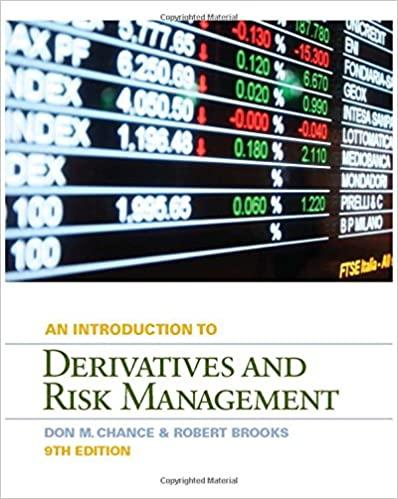Answered step by step
Verified Expert Solution
Question
1 Approved Answer
Suppose that in July 2 0 1 3 , Nike Inc. had sales of $ 2 5 , 4 1 2 million, EBITDA of $
Suppose that in July Nike Inc. had sales of $ million, EBITDA of $ million, excess cash of $ million, $ million of debt, and million shares outstanding.
a Using the average enterprise value to sales multiple in the table above, estimate Nike's share price.
b What range of share prices do you estimate based on the highest and lowest enterprise value to sales multiples in the table above?
c Using the average enterprise value to EBITDA multiple in the table above, estimate Nike's share price.
d What range of share prices do you estimate based on the highest and lowest enterprise value to EBITDA multiples in the table above?
a Using the average enterprise value to sales multiple in the table above, estimate Nike's share price.
Nike's share price using the average enterprise value to sales multiple will be $
Round to the nearest cent.
b What range of share prices do you estimate based on the highest and lowest enterprise value to sales multiples in the table above?
The range of prices using the average enterprise value to sales multiple is as follows:
The highest price will be $
Round to the nearest cent.
The lowest price will be $
Round to the nearest cent.
c Using the average enterprise value to EBITDA multiple in the table above, estimate Nike's share price.
Nike's share price using the average enterprise value to EBITDA multiple will be $
Round to the nearest cent.
d What range of share prices do you estimate based on the highest and lowest enterprise value to EBITDA multiples in the table above?
The range of prices using the average enterprise value to EBITDA multiple is as follows:
The highest price will be $
Round to the nearest cent.
The lowest price will be $
Round to the nearest cent.

Step by Step Solution
There are 3 Steps involved in it
Step: 1

Get Instant Access to Expert-Tailored Solutions
See step-by-step solutions with expert insights and AI powered tools for academic success
Step: 2

Step: 3

Ace Your Homework with AI
Get the answers you need in no time with our AI-driven, step-by-step assistance
Get Started


